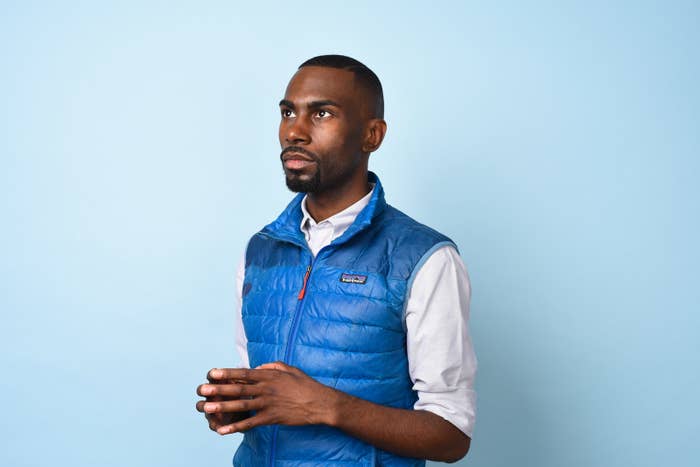
Activist DeRay Mckesson, who became well-known after the protests in Ferguson, Missouri, is often identifiable by his royal blue Patagonia down vest.
He explained in an interview with BuzzFeed News' AM to DM on Wednesday that he wears the vest so that he never forgets the 400 days he spent protesting the shooting death of Michael Brown by police in Ferguson in 2014.
"I still wear it because it reminds me that all of the things that we went through were real," said Mckesson, whose book On the Other Side of Freedom: The Case for Hope was published on Tuesday.
"I've had this vest on when I was tear-gassed, when I was dragged out of the police department by my ankles, when I was shot at with bullets," Mckesson said.
As well as the protests in Ferguson, Mckesson protested in Charleston, South Carolina, after a white nationalist murdered nine black people in a church, and he was arrested in Baton Rouge, Louisiana, in protests about the death of Alton Sterling, who was killed by police. He wore the blue vest during all of it.
"This is my grounding piece. I have been in so many places that I could forget about what happened, and I never want to forget how fragile freedom is and was in those moments," Mckesson said.
Originally he wore the vest for purely practical reasons: It was chilly marching in the streets of Ferguson, Missouri, in late 2014.
"It got cold really quick and I needed something to wear that I would never have to pack. And the vest was it," said Mckesson.
Mckesson's book focuses on the lessons he learned from protesting.
"Some I had been writing in my head since the moment I stood in the streets," he told AM to DM. "People would have ignored the death of Michael Brown as if it was a blip on the radar."
He also spoke about the importance of imagination and creativity in protesting, particularly when it comes to imagining what different societal structures can look like.
"So often we think of resistance as only tearing the bad things. But when the bad things end, we still have to build something good. And that’s when the imagination begins," he said.
